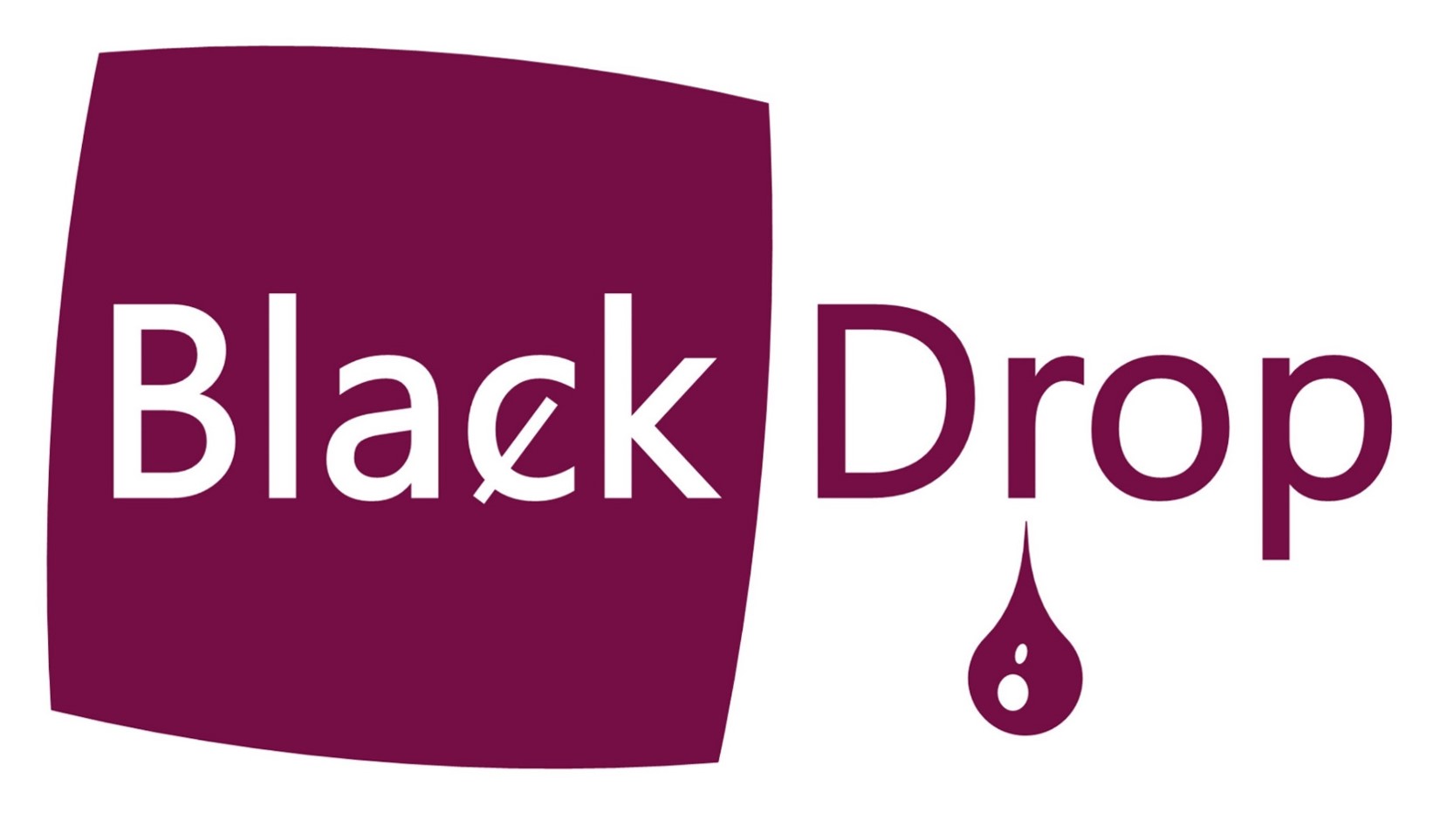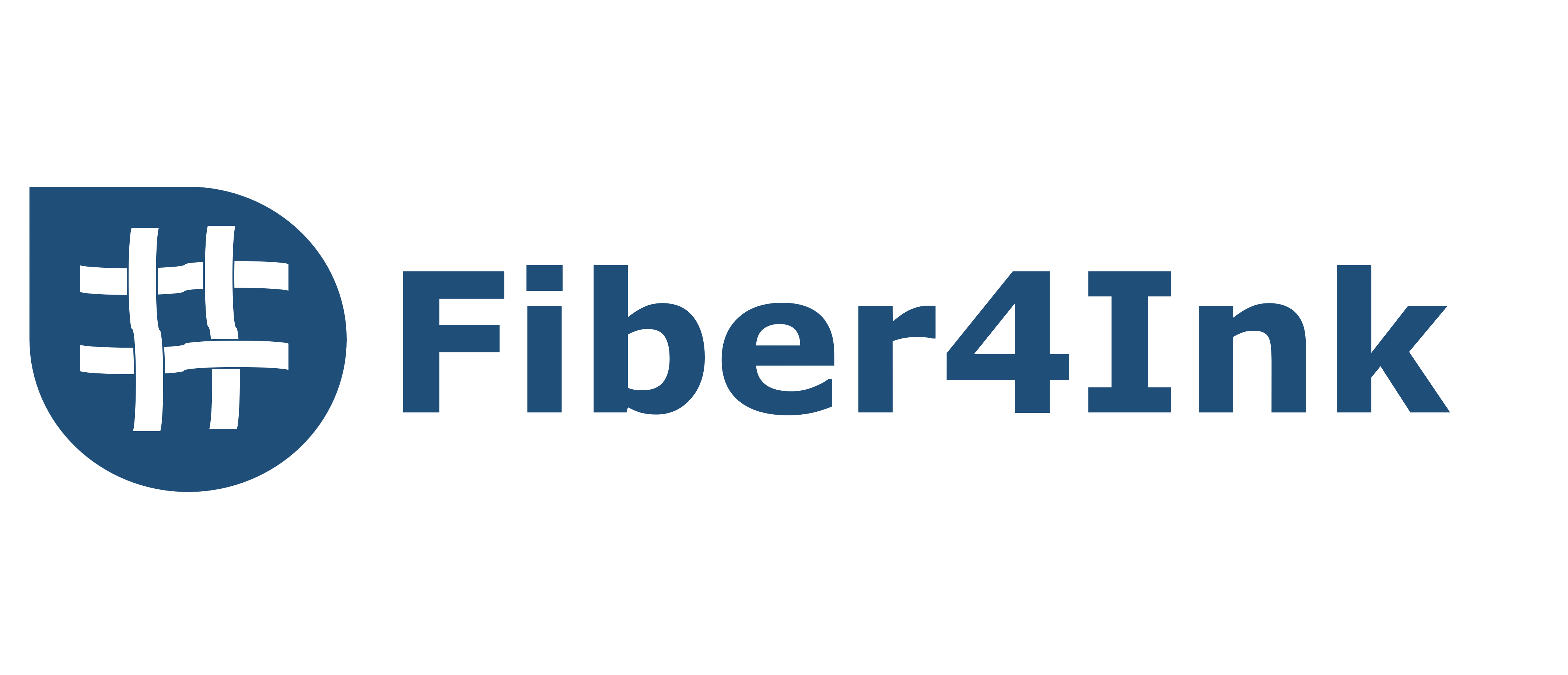
Fiber4Ink
Fiber4Ink is an ambitious initiative aimed at revolutionizing the field of tissue engineering through the development of a groundbreaking material platform tailored for 3D bioprinting. Known as bioink, this novel material is designed to drive significant advancements in the creation and cultivation of engineered tissues.
The core objective of Fiber4Ink is to create a versatile bioink platform that can be adapted to a wide array of cross-linking mechanisms—whether physical, thermal, or light-based—alongside various 3D printing modalities, such as direct bioprinting, stereolithography, and microfluidic printing. By merging the excellent cell-biological properties of protein-based hydrogels, particularly collagen, with the multifunctional physico-chemical properties of microfibers, Fiber4Ink is pushing the boundaries of what is possible in tissue engineering.
To ensure the bioink meets diverse application needs, additional rheology modifiers are incorporated, allowing the material’s properties to be finely adjusted for different 3D printing techniques. After printing, the embedded fibers in the bioink facilitate targeted cell growth within 3D tissue cultures, influencing the cells on a topographical, molecular, and electrical level. This capability positions Fiber4Ink as a critical tool in the advancement of regenerative medicine and biofabrication.
Project Partners:
– IoLiTec Ionic Liquids Technologies
– Technische Universität Darmstadt
– GfN Herstellung von Naturextrakten & Selco Wirkstoffe Vertriebs
– Black Drop
– HOT screen
More information at:
Fiber4ink
Piezo4Spine
Piezo4Spine is an innovative project funded by the European Union under the Horizon Europe Pathfinder program. This initiative is dedicated to advancing treatment options for spinal cord injuries (SCI), a condition that results from damage to the spinal cord due to trauma, disease, or degeneration. SCI leads to significant physical impairments, including paralysis and loss of sensation, and currently, there is no cure available—treatment mainly focuses on managing symptoms and preventing further injury.
The Piezo4Spine project aims to revolutionize SCI treatment with the development of a novel 3D bioprinted mesh embedded with nanocarriers containing therapeutic agents. This advanced technology is designed to facilitate neural repair and promote functional recovery by targeting multiple cells within the spinal cord. The unique feature of this mesh is its ability to be wirelessly powered, allowing precise control over the timing and dosage of therapeutic agents.
Piezo4Spine introduces a groundbreaking approach by exploring mechanotransduction’s role in spinal cord physiology and pathology—an area not previously applied to SCI. The project aims to overcome the limitations of current therapies, which often fail to promote successful axon regeneration and functional recovery. By leveraging a multidisciplinary consortium of scientific, technological, clinical, and industrial experts, Piezo4Spine seeks to develop novel therapies with the potential to address a wide range of neural and non-neural pathologies.
Key Objectives:
– Develop a 3D bioprinted mesh that integrates bioactive nanocarriers for targeted neural repair.
– Utilize mechanotransduction and gene therapy strategies to address inhibitory scarring and enhance neural regeneration.
– Offer a robust and adaptable biomaterial for controlled delivery of therapeutics at the injury site.
Project Partners:
– Universidade de Coimbra
– CSIC – Consejo Superior de Investigaciones Científicas
– UCLouvain: Université catholique de Louvain (Belgium)
– Istituto Italiano di Tecnologia
– Sescam – Gobierno de Castilla-La Mancha
– Black Drop
– acib – Austrian Centre of Industrial Biotechnology
More information at:
piezo4spine.eu
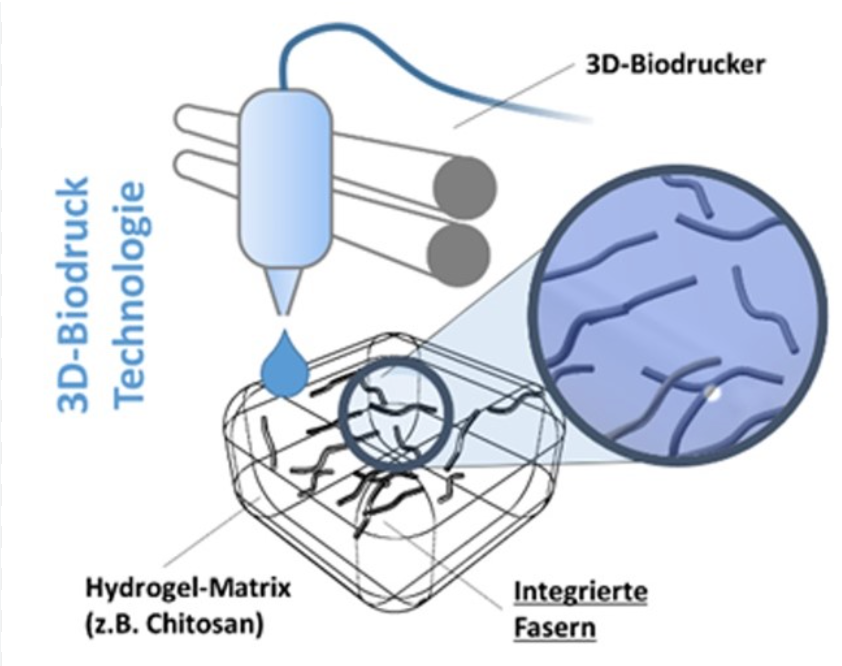
3G-BioInk
3G-BioInk is an innovative joint project aimed at developing and optimizing a cutting-edge platform technology that serves as a powerful screening tool for the research and development of novel drugs. This project focuses on advancing the field of 3D bioprinting by integrating specialized fibers into bioinks, thereby enabling the creation of sophisticated organ-like tissue models.
Project Focus:
At the core of the 3G-BioInk project is the development of electrospun fibers—ranging from bulk and hollow to core-sheath varieties—designed for seamless integration into bioinks. These fibers are produced, fragmented, sterilized, and modified to overcome several limitations faced by traditional tissue models.
The innovative approach of 3G-BioInk aims to achieve the following:
– Directed Cell Growth: By incorporating biofunctionalized fibers with specific surface coatings, the project seeks to create “topographic guide rails” that initiate and guide cell growth in a targeted manner.
– Site-Resolved Drug Release: The project enables precise placement of drug-loaded bulk or core-sheath fibers within complex tissue models, allowing for site-specific drug or growth factor release, particularly in co-culture environments.
– Electrical Stimulation: The integration of conductive structures, achieved through the use of CNT-coated bulk fibers, facilitates sufficient electrical stimulation, crucial for the development of functional tissue constructs.
– Targeted Nutrient Supply: The inclusion of hollow fibers in the bioinks ensures an efficient supply of nutrients, even in larger or denser tissue constructs, which is vital for maintaining cell viability and function.
The 3G-BioInk project represents a significant advancement in the field of tissue engineering and drug development. By creating more accurate and functional tissue models, this technology holds the potential to revolutionize the way researchers screen and develop new therapeutics, leading to more effective and targeted treatments.
Project Partners:
– IoLiTec Ionic Liquids Technologies
– Heppe Medical Chitosan
– HOT Screen
– Syntab Therapeutics
– Black Drop
– Technische Universität Darmstadt, Institut für Druckmaschinen und Druckverfahren
More information at:
3G-BioInk

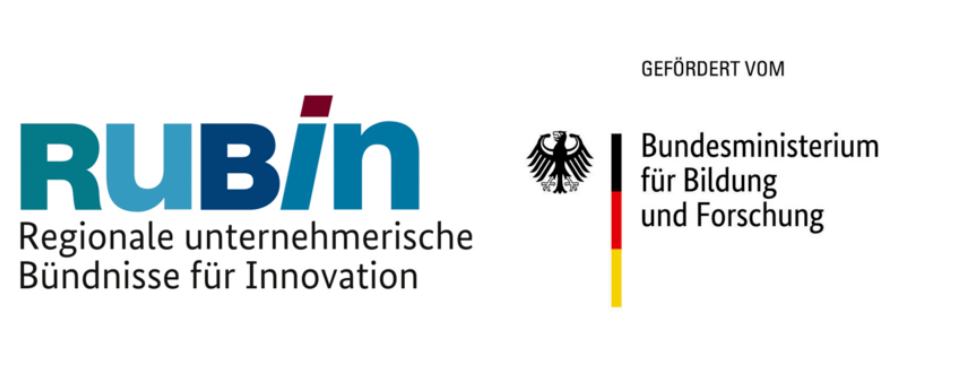
RUBIN-reACT
reACT (Resorbable Medical Solutions from the Aachen Technology Region) is an ambitious collaborative project under the RUBIN funding program, initiated by the German Federal Ministry of Education and Research (BMBF). The program aims to enhance strategic cooperation between companies, universities, and research institutions, fostering regional innovation, value chain development, and the creation of groundbreaking products and services.
Project Focus:
The primary goal of the reACT project is to address the critical clinical need for temporally adaptive, partially resorbable endoluminal support structures, specifically stents, for cardiovascular care. In Germany alone, approximately 300,000 patients live with congenital heart disease, with at least 20% requiring heart valve replacement during their lifetime. Current bioprostheses, such as homografts and xenografts, often suffer from reduced durability due to early calcification, leading to multiple repeat surgeries. This issue is particularly significant for children, whose heart valves must adapt to growth and increasing hemodynamic demands.
Innovative Approach:
The reACT project leverages the innovation potential of new resorbable materials, such as resorbable metals combined with non-resorbable materials and adaptive hydrogels. These materials are integrated using advanced manufacturing processes, including 3D printing and textile technology. The project also benefits from the specialized application knowledge of clinical partners to develop partially resorbable vascular implants that can adapt over time.
BioTex Sub-Project:
Within reACT, BioTex is leading the sub-project “Cardiovascular Intervention – Biohybrid Partially Resorbable Adult and Juvenile Heart Valves.” This sub-project focuses on developing heart valves for minimally invasive therapy of congenital heart valve defects in children. The innovative valve structures are designed to grow with the child’s body, combining a non-degradable basic structure with a controlled degradable thread system. These biohybrid constructs offer exceptional bio- and hemocompatibility, along with partially resorbable textile reinforcement that supports permanent stability and allows for growth with the body’s own cells after repopulation.
This project is funded by the BMBF (funding code 03RU1U174C).
Project Partners:
– Meotec
– Fibrothelium
– Black Drop
– Abiomed
– Embocraft
– Klinik für Kardiologie, Uniklinik Aachen
More information at:
reACT
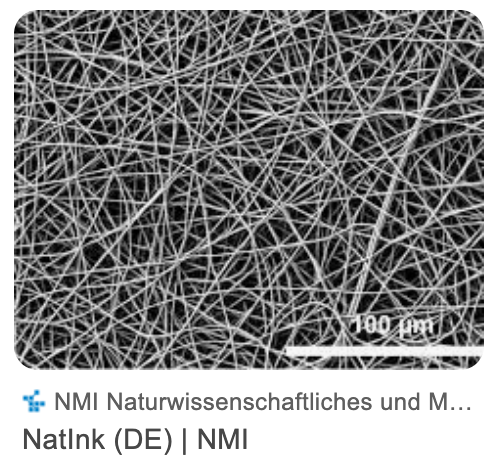
NatInk
NatInk is an innovative research project focused on developing a novel 3D-printable bioink that incorporates electrospun hollow fiber fragments to enhance diffusion properties. This collaborative effort aims to advance the field of 3D bioprinting by addressing critical challenges related to nutrient and metabolite exchange in printed biomimetic structures.
Key Objectives:
– Develop a bioink that integrates capillary-sized electrospun hollow fiber fragments, enhancing the diffusion properties of hydrogels used in 3D bioprinting.
– Improve the dimensional stability and cell compatibility of 3D-printed structures, ensuring high cell viability and effective nutrient exchange.
– Innovate and evaluate new 3D printing processes that are compatible with this advanced bioink, paving the way for applications in medical technology, in vitro diagnostics, and in vitro meat production.
Scientific and Technological Innovation:
The NatInk project tackles the critical challenge of nutrient and metabolite exchange in 3D bioprinting by incorporating hollow fiber fragments into bioinks. This novel approach is expected to close the supply gap in 3D-printed tissues, maintaining high cell viability while delivering improved print quality. The project not only focuses on the development of the bioink but also on the optimization of 3D printing processes that will enable the successful application of this technology in various fields.
Future Applications:
The innovative bioink developed through NatInk holds the potential to revolutionize various sectors, including medical technology, in vitro diagnostics, and in vitro meat production. By providing a platform for more effective 3D bioprinting, this project is set to contribute significantly to the advancement of these industries.
Project Partners:
– Black Drop
– Institut für Druckmaschinen und Druckverfahren, TU Darmstadt
More information at:
NatInk
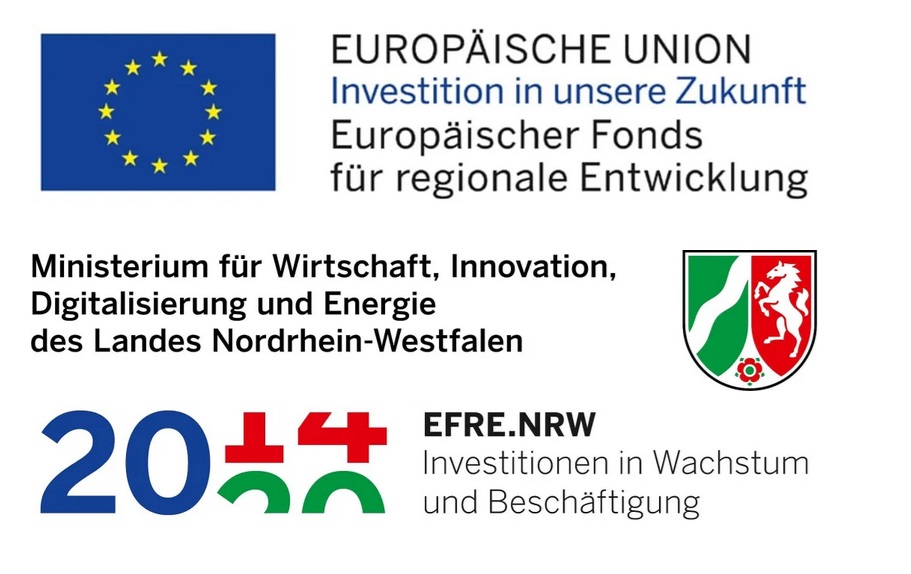
Taktira
Taktira is an innovative research initiative focused on enhancing immunotherapy for cancer treatment. The project’s goal is to develop an advanced immunotherapy with reduced side effects by improving tumor-targeted and activatable immune reaction initiation.
Taktira is funded by the European Union and the state of North Rhine-Westphalia. This funds enables the development of advanced software methods for reconstructing, visualizing, and quantitatively evaluating multimodal longitudinal image data, crucial for assessing drug biodistribution and the impact of tumor-specific and immunotherapeutic agents.
Key Objectives:
– Develop a novel immunotherapy that triggers immune responses specifically at tumor sites, minimizing off-target effects.
– Investigate and test peptide-based immunotherapeutics, known as “Immune System Engagers (ISErs),” using a cutting-edge screening system across various cancer models in vitro and in vivo.
– Utilize advanced nanocarrier technology to enhance drug delivery and efficacy.
Scientific Highlights:
The project team published a significant study titled “Optical Imaging of the Whole-Body to Cellular Biodistribution of Clinical-Stage PEG-b-pHPMA-Based Core-Crosslinked Polymeric Micelles.” This research demonstrated that the nanocarrier, CCPM, accumulates more effectively in tumors compared to liver or spleen, both at organ, tissue, and cellular levels. These findings were confirmed through in vivo and in vitro experiments, validating the effectiveness of the nanocarrier in targeting cancer cells.
Project Partners:
– Institute for Experimental Molecular Imaging
– Institute for Laboratory Animal Science
– Clinic for Gynecology and Obstetrics
– Syntab Therapeutics
– TECO Development
– University of Vienna
– Black Drop
More information at:
Taktira
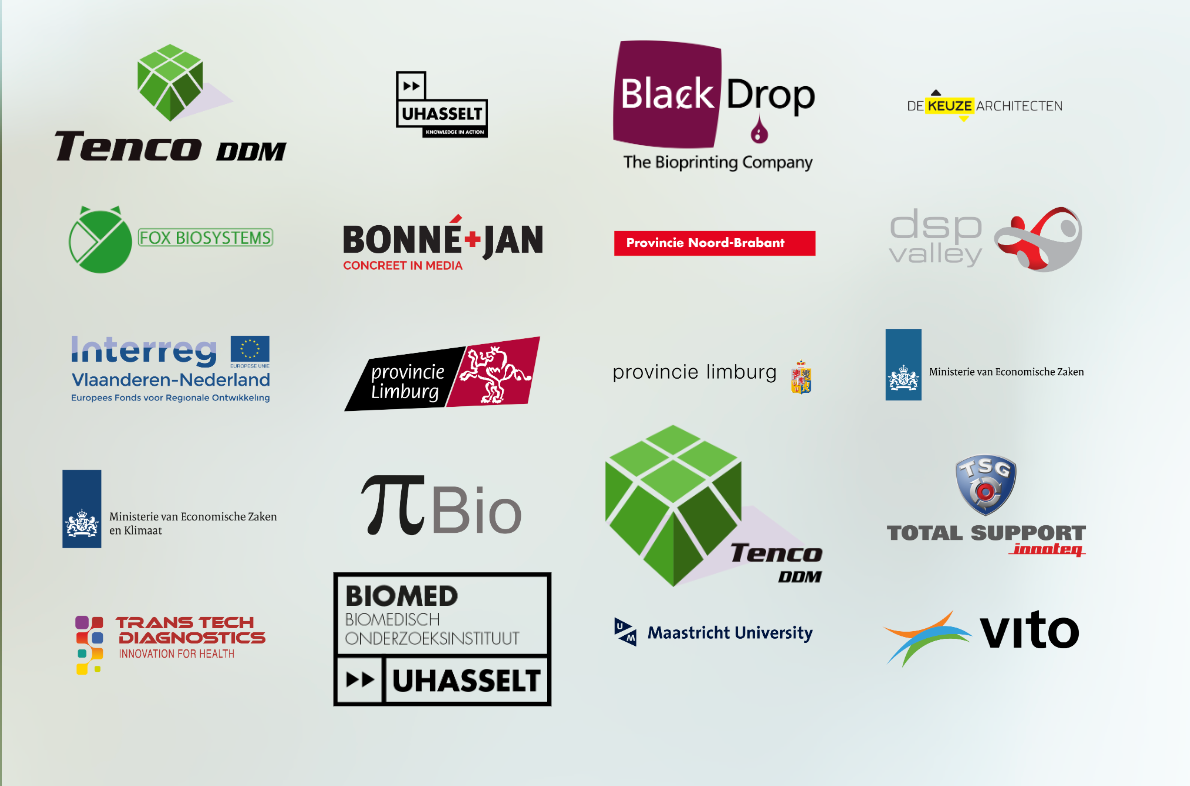

Trans Tech Diagnostics
Trans Tech Diagnostics (TTD) is a collaborative initiative focused on advancing diagnostic technologies for cardiovascular diseases. As part of the Interreg Flanders-The Netherlands project, TTD aims to develop improved methods for identifying and managing cardiovascular conditions, which are the leading cause of death in the European Union.
Key Objectives:
– Develop advanced diagnostic tools to better identify cardiovascular disease risk, particularly in asymptomatic individuals who are at increased risk of cardiovascular events such as heart attacks.
– Enhance the precision of cardiovascular risk assessment through new bioassays, molecular biomarkers, and experimental infrastructure.
– Improve therapeutic fine-tuning to reduce complications and side effects, addressing the needs of both healthcare professionals and the market.
Scientific and Technological Innovation:
The project leverages cutting-edge technologies, including bioassays for inflammation, testing of (nano)molecular biomarkers, and the development of new experimental infrastructures. By focusing on personalized cardiovascular risk assessment, TTD aims to provide more accurate diagnostics and enable more effective interventions.
Project Partners:
– Universiteit Maastricht (CARIM)
– Universiteit Hasselt (BIOMED)
– VITO
– TSG InnoteQ
– PimBio
– Tenco DDM
– DSP Valley
– BONNÉ+JAN
– de Keuzearchitecten
– Fox Biosystems
– Black Drop
More information at:
interregttd.eu
